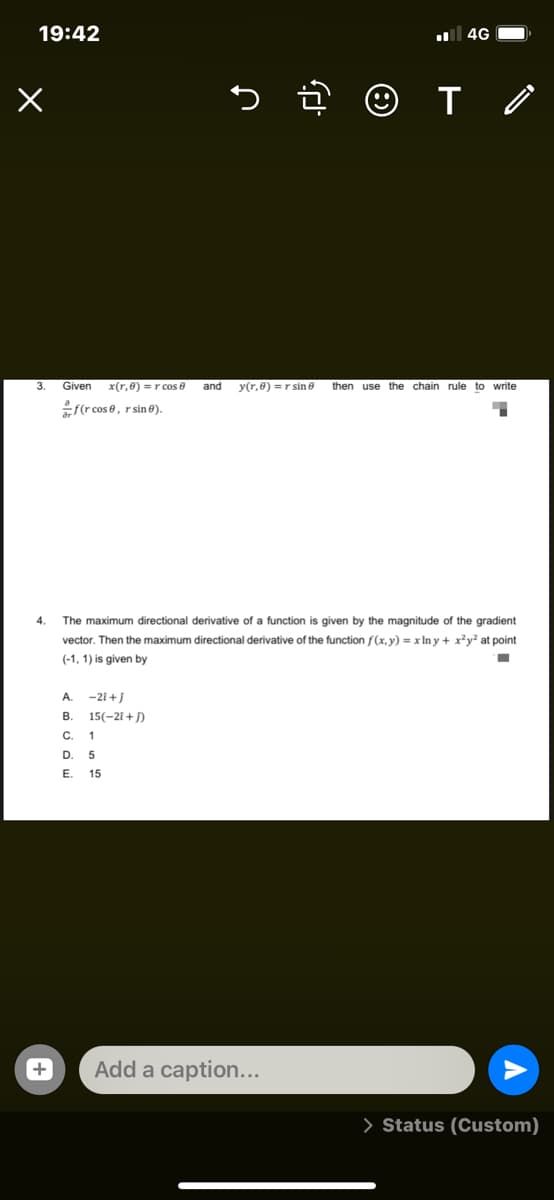3. Given x(r,0) = r cos e and y(r,@) =r sin@ then use the chain rule to write (r cos 0, r sin@). 4. The maximum directional derivative of a function is given by the magnitude of the gradient vector. Then the maximum directional derivative of the function f(x, y) = x In y + x*y* at point (-1, 1) is given by A. -21 +j в. 15(-21+ ) с. 1 D. 5 E. 15
3. Given x(r,0) = r cos e and y(r,@) =r sin@ then use the chain rule to write (r cos 0, r sin@). 4. The maximum directional derivative of a function is given by the magnitude of the gradient vector. Then the maximum directional derivative of the function f(x, y) = x In y + x*y* at point (-1, 1) is given by A. -21 +j в. 15(-21+ ) с. 1 D. 5 E. 15
Algebra & Trigonometry with Analytic Geometry
13th Edition
ISBN:9781133382119
Author:Swokowski
Publisher:Swokowski
Chapter6: The Trigonometric Functions
Section6.6: Additional Trigonometric Graphs
Problem 77E
Related questions
Question

Transcribed Image Text:19:42
4G
3.
Given
x(r,0) =r cos e
and
y(r,0) =r sin e
then use the chain rule to write
f(r cos e, r sin e).
The maximum directional derivative of a function is given by the magnitude of the gradient
vector. Then the maximum directional derivative of the function f(x, y) = x In y + x²y² at point
(-1, 1) is given by
A.
-21 +j
В.
15(-21 + j)
С.
1
D.
Е.
15
Add a caption...
> Status (Custom)
+
Expert Solution
This question has been solved!
Explore an expertly crafted, step-by-step solution for a thorough understanding of key concepts.
Step by step
Solved in 2 steps with 2 images

Recommended textbooks for you

Algebra & Trigonometry with Analytic Geometry
Algebra
ISBN:
9781133382119
Author:
Swokowski
Publisher:
Cengage

Algebra & Trigonometry with Analytic Geometry
Algebra
ISBN:
9781133382119
Author:
Swokowski
Publisher:
Cengage